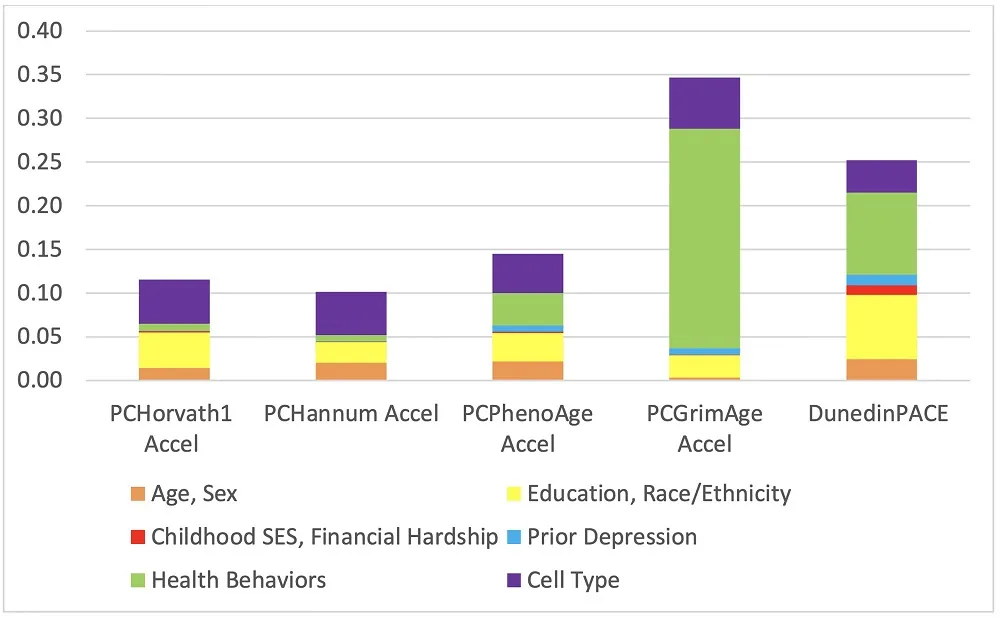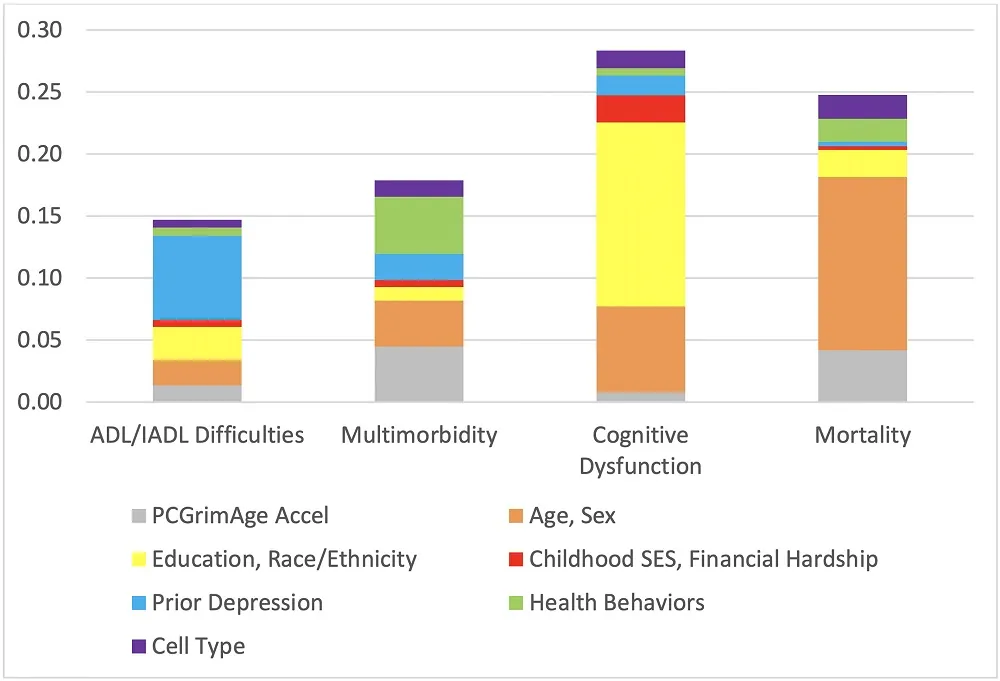Researchers publishing in PNAS have found that well-known epigenetic clocks are valuable in predicting health outcomes, including mortality, in human beings.
The usefulness of clocks

Read More
This paper begins with a discussion of epigenetic clocks, most notably the later-generation clocks, such as PhenoAge, DunedinPACE, and the strong mortality predictor GrimAge. While these clocks have measurement errors that are difficult to control for [1], and epigenetic noise is a strong part of what these clocks are actually measuring, principal component (PC) measurements have been developed to focus on the key factors [2].
However, because these clocks have not been in existence for very long, it had been previously impossible to conduct a true longitudinal experiment: to use modern epigenetic clocks to assess the biological age of a group of humans, then wait the years that it takes for those humans to die or suffer from adverse health outcomes – or to avoid those fates.
Looking for accuracy
Using data from 3,581 participants in the Health Retirement Study, these researchers compared several clocks to one another and to known socioeconomic factors that are correlated with health and mortality.
The first measurement was to use four of the clocks as they were originally intended: to gauge the participants’ biological age. While the two first-generation clocks (Horvath and Hannum) yielded lower numbers, PhenoAge yielded an average of 56.46, while GrimAge reported 66.97. Using PC analysis drove PhenoAge up to 65.53 and GrimAge to 77.02. The participants were, chronologically, an average of 68.25 years old.
Additionally, the age acceleration clock DunedinPACE stated that the participants were aging, on average, 1.02 years per year of chronological age.
Education was not significantly correlated with accelerated aging according to the first-generation clocks included in this study, nor was it correlated with non-PC PhenoAge. However, the PC version of PhenoAge, both versions of GrimAge, and DunedinPACE all agreed that higher educational attainment is statistically correlated with slower epigenetic aging. As expected, obesity is associated with more aging across every single one of the clocks tested.
Other health behaviors, along with childhood hardships and socioeconomic status, also had strong correlations with epigenetic aging as measured by these clocks. Interestingly, in first-generation clocks and the non-PC PhenoAge measurement, childhood financial hardship was associated with slower aging. GrimAge was particularly well-tuned for measuring the impact of health behaviors, such as smoking.

Predicting mortality and morbidity
After the participants’ ages were measured, this study included two follow-ups: two years afterwards to detect adverse health outcomes, and four years afterwards to determine who had died. Age acceleration as measured by all of the clocks, including the first-generation clocks, was associated with increased adverse health outcomes. More rapid age acceleration, according to PhenoAge and GrimAge, is associated with a decreased ability to carry out the activities involved in daily living as well as with cognitive dysfunction.
Critically, even after controlling for known demographic factors and health behaviors that are associated with faster epigenetic aging, the clocks were still strong predictors of mortality and morbidity. After adjusting for these factors, the clocks were found to explain between 15% and 18.6% of multimorbidity and between 22% and 26% of mortality.
GrimAge was singled out to be compared to other measurements, and while it did not seem to be very strong, comparatively, in predicting whether or not someone would have cognitive issues or be unable to carry out the daily activities of living, it was valuable in predicting both multimorbidity and mortality.

However, the researchers also note that these clocks were trained on demographic cohorts that had variabilities in known health-related factors. Therefore, they must also be geared towards estimating these factors, which have clear impacts on biological age. This study makes it even more clear that epigenetic aging is tightly linked to these external factors, suggesting that it can be, and is, amenable to behavioral and lifestyle interventions that lengthen people’s lives.
Literature
[1] Lehne, B., Drong, A. W., Loh, M., Zhang, W., Scott, W. R., Tan, S. T., … & Chambers, J. C. (2015). A coherent approach for analysis of the Illumina HumanMethylation450 BeadChip improves data quality and performance in epigenome-wide association studies. Genome biology, 16(1), 1-12.
[2] Higgins-Chen, A. T., Thrush, K. L., Wang, Y., Minteer, C. J., Kuo, P. L., Wang, M., … & Levine, M. E. (2022). A computational solution for bolstering reliability of epigenetic clocks: Implications for clinical trials and longitudinal tracking. Nature aging, 2(7), 644-661.







